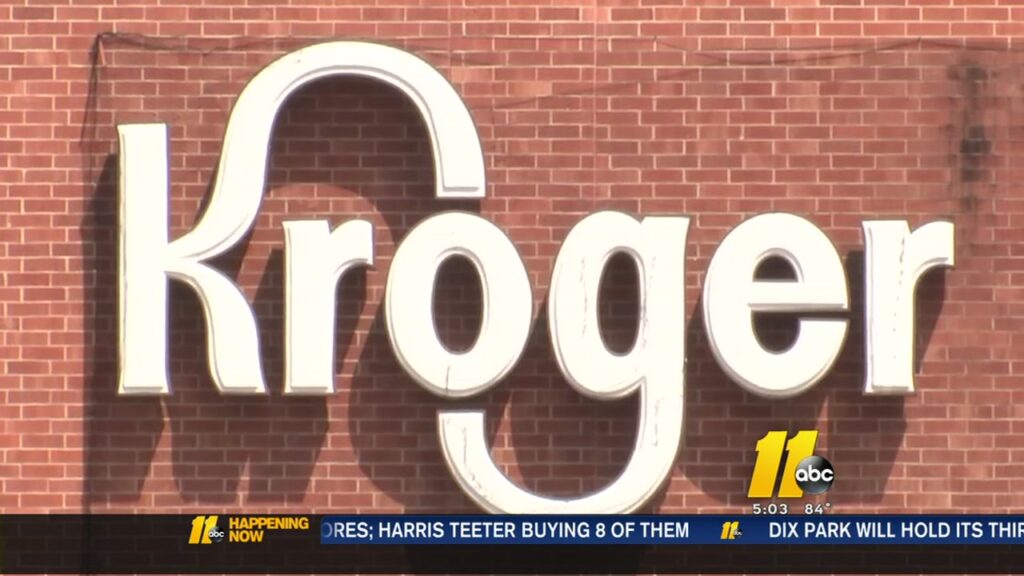Kroger to Close 60 Stores nationwide due to financial challenges and shifting consumer habits, impacting thousands of employees and local communities.
Overview of Kroger’s Announcement.

In a significant shift for one of America’s largest grocery chains, Kroger to close 60 stores nationwide across the United States over the next 18 months. The closures, which represent around 5% of Kroger-branded locations, were revealed in the company’s Q1 2025 earnings report released on June 20.

Kroger to Shut 60 Stores Across the U.S. in 18-Month Restructuring Plan
Kroger, one of America’s largest grocery chains, has announced plans Kroger to Close 60 Stores nationwide over the next 18 months. The decision, disclosed in its Q1 2025 earnings report, is tied to a $100 million impairment charge aimed at improving long-term efficiency. While specific store locations remain mostly undisclosed, closures have been confirmed in Texas and West Virginia. Kroger assures that impacted employees will be offered jobs at nearby locations. Kroger to Close 60 Stores Nationwide Despite the cuts, the company continues to grow in eCommerce, pharmacy, and fresh foods. The move has drawn criticism from labor unions over its impact on communities and workers.
Table of Contents
- Overview of Kroger’s Announcement
- Financials Behind the Decision
- Confirmed Store Closures
- Impact on Employees
- What Shoppers Should Know
- Looking Ahead
While Kroger has not released a full list of affected locations, it confirmed that closures will be based on long-term financial performance, store overlap, and evolving customer behavior. Kroger to Close 60 Stores Nationwide The Cincinnati-based grocery giant operates 1,239 Kroger-branded stores across 16 states.
Financials Behind the Decision
Despite reporting a 15% year-over-year growth in eCommerce sales, Kroger also disclosed a $100 million impairment charge associated with the store closures. Kroger to Close 60 Stores Nationwide The company states that the closures are part of an efficiency strategy and are expected to result in a “modest financial benefit.”
“Kroger is committed to reinvesting these savings back into the customer experience,” the company noted, adding that the closures will not impact its full-year financial guidance.
Confirmed Store Closures
Kroger to Close 60 Stores Nationwide Although the company has not published a full list of locations, a few stores have already been confirmed by local reports:
- McKinney, Texas— The Kroger at 1707 W. University Drive will be closing, according to WAFF.
- Gassaway, West Virginia— The Kroger #739 is scheduled to shut its doors on August 22, 2025, per a press release from the United Food & Commercial Workers (UFCW) Local 400 Union.
The UFCW Local 400, which represents many Kroger workers, criticized the decision, arguing that it puts profits over people, especially in rural communities with limited grocery options.
“The communities served by our members at these stores will suffer as a direct result of Kroger prioritizing Wall Street investors over their customers and hard-working employees,” said UFCW President Mark Federici.
Impact on Employees
Kroger to Close 60 Stores Nationwide has stated that employees impacted by the closures will be offered jobs at nearby stores. However, union leaders remain concerned about the disruption to workers’ lives, especially in less populated regions where alternative employment opportunities may be scarce.
What Shoppers Should Know
At this time, Kroger has not detailed how it plans to handle product redistribution or liquidation for closing stores. However, the company emphasized that it is continuing to invest heavily in
- Pharmacy services
- Fresh food offerings
- E-commerce expansion
With these areas expected to drive future growth, Kroger appears to be aligning its resources with changing consumer trends and a competitive retail landscape.
Looking Ahead
As Kroger pursues a more streamlined and digital-forward future, the ripple effects of Kroger to Close 60 Stores Nationwide these closures will be felt not only by its employees but also by loyal shoppers in affected communities.
More updates are expected as the company continues to evaluate underperforming locations. In the meantime, Kroger customers are encouraged to check with local store managers or visit Kroger.com for updates on specific store statuses.
Stay tuned to ThaseenPost.com for breaking retail and business news that impacts your community.
Written by: [Your Name]
Editor, ThaseenPost.com
Let me know if you’d like the anchor links to be adapted for a specific CMS like WordPress or if you want a featured image suggestion for the article.

